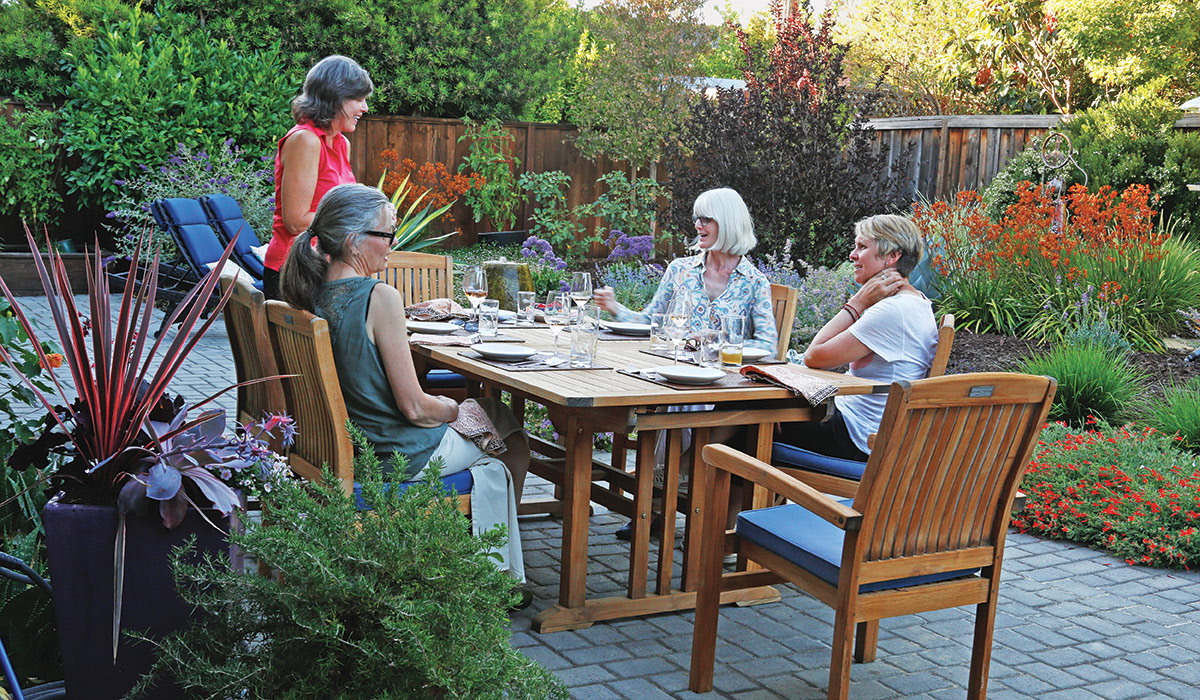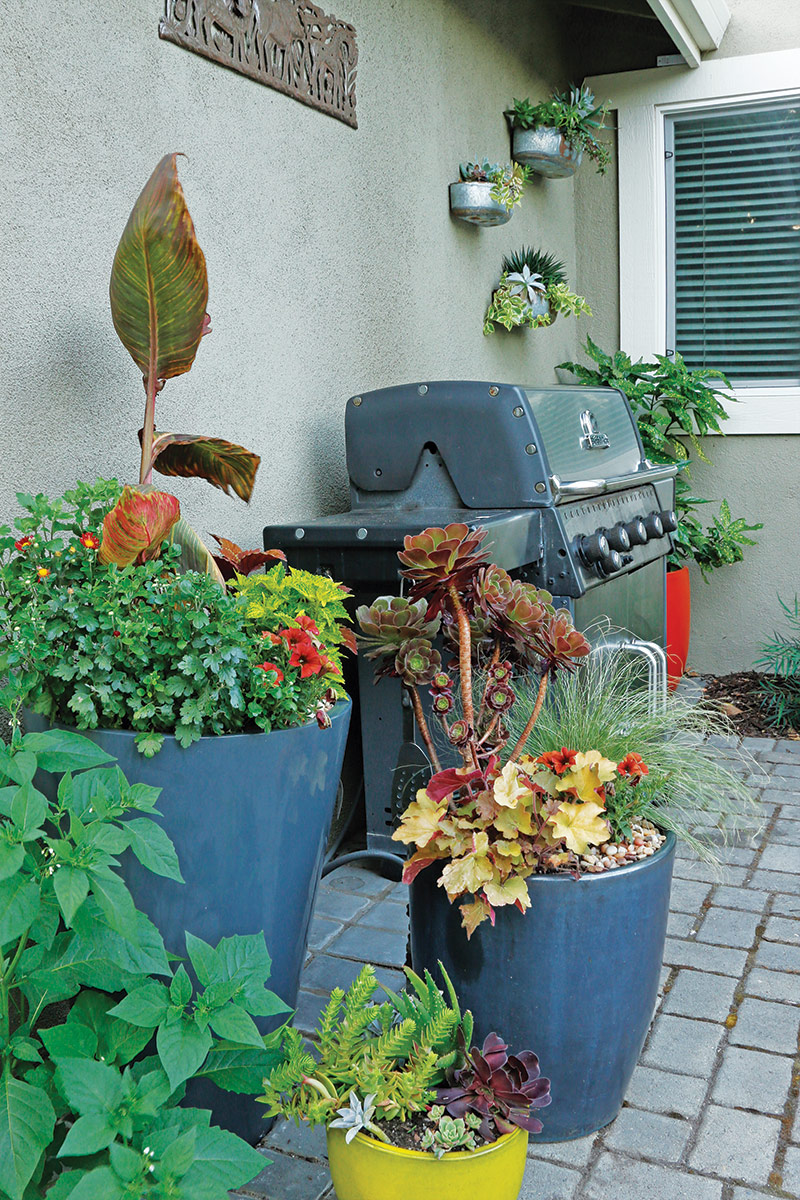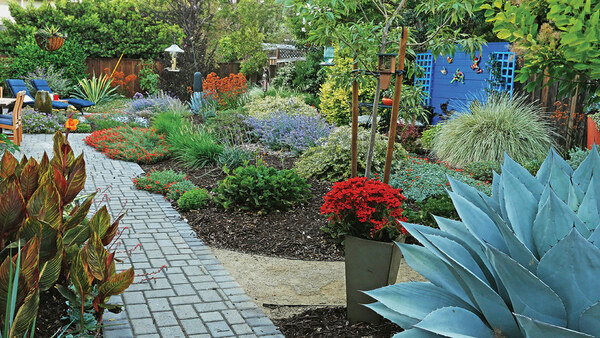
When I began designing gardens more than 20 years ago, I was surprised to find that smaller spaces were often more challenging to plan than larger ones. In those early years, clients with tiny lots would come to me with extensive lists of their must-have items, and I would struggle to fit everything in. It was a huge breakthrough when I finally realized that identifying the specific features and details to include in a garden should be the final step in the process, not the first. Since then, every consultation I have with a new client begins with three questions that I’ve nicknamed “the three W’s.” These prompts help my clients to envision themselves interacting with their redesigned spaces, and while they are useful in reimagining gardens of all sizes, they are particularly helpful when space is precious. When my husband and I recently moved into a new home with a small backyard, we had the opportunity to use the process for ourselves. Here’s what we discovered.
Learn more
See the planting plan for this garden
Three questions to help you prioritize what is most important for your small garden
In designing my new back garden, I asked myself the same three basic questions that have helped countless clients of mine figure out how they want to use their outdoor spaces.
1. What will you be doing in the garden?

For my husband and me, the garden is a refuge and our favorite place to relax. So I started the design by finding a spot for our lounge chairs that would maximize views of the garden and minimize sight lines toward the unattractive utility pole at the northwest corner of our yard (photo above). I created a patio oriented away from the offending pole just large enough to hold our chairs (photo right). We enjoy watching the birds and other wildlife that visit the garden, so I sited plants such as Ultra Violet™ dwarf butterfly bush (Buddleia ‘PDSI-1’, Zones 5–9) and California fuchsia (Epilobium canum, Zones 8–11) nearby to attract hummingbirds and other pollinators. While it might seem unusual to start here rather than with the main patio or pathways, this made sense for us because it means everything flows around our favorite garden activity.
2. When will you be outside?

In addition to relaxing outdoors at the end of the workday, we make the most of California’s mild weather and regularly eat lunch in the garden on weekends. We call the space I designed for midday dining the “‘ladies who lunch’ patio” (photo above), as it is positioned at the back of the garden to take advantage of the midday shade provided by our neighbor’s Chinese pistache trees (Pistacia chinensis, Zones 6–9).
3. Who will be with you?

On most days it is just the two of us, but we also enjoy entertaining. Making a small space flexible is not always a function of layout; furnishings also play a role. In our case, we opted for a dining table with extendable leaves that can seat up to 10 people (photo below). We didn’t want an overly large table permanently taking up space on our main patio located next to our kitchen door.
A garden designer’s home laboratory
This suburban back garden is just 30 feet deep and 60 feet wide, so every feature needs to work extra hard and look good from every angle.

- Lounge chairs
- Decomposed gravel path
- Lunch table
- Succulent nursery
- Barbecue grill
- Expandable dining table
- Kitchen door
- Pot fountain
A few basic planting strategies make a small space work harder

Once you’ve finalized your layout, it’s time to choose your plants. Don’t waste space on one-hit wonders that shine for only a month or so. Instead, opt for perennials with a lengthy bloom time of at least two seasons. Classics such as catmint (Nepeta spp. and cvs., Zones 4–8) furnish reliable color over a long season, while structural plants such as ‘Tequila Sunrise’ kangaroo paw (Anigozanthos ‘Tequila Sunrise’, Zones 9–11, photo right) provide architectural interest and months of color.
In general, plan for most of your seasonal color to come in spring, summer, and fall if that’s when you will be in the garden the most, but be sure to have at least one plant that shines in winter so that every season has a plant to mark it. To add even more seasonality, I interplant grasses and perennials that must be cut all the way to the ground in winter with early-blooming bulbs like daffodils. By the time the bulbs are spent, the plants around them have grown to fill the space.
Limited space makes the classic approach of succession planting a bit less effective, but this idea can be reinterpreted as seasonal layering. Spring-blooming perennials and shrubs are planted toward the back of the garden, where they will be visible early in the season. Once their blooms wind down, it will be time for perennials such as Rozanne hardy geranium (Geranium ‘Gerwat’, Zones 3–10), ‘Terracotta’ yarrow (Achillea ‘Terracotta’, Zones 3–9), and California fuchsia to shine.

As you work through the three W’s for your own garden spaces, keep in mind that not everything about a small garden is a problem to be solved. Details that might not be noticed in a larger space, such as the finely etched patterns on the glaucous foliage of whale’s tongue agave (Agave ovatifolia cv., Zones 7b–10), will shine in a smaller garden where everything has a prominent position.
Focal points tie the whole space together
Small spaces benefit from well-chosen focal points to create a cohesive composition. I rely on three different types of focal points, which vary depending on what they need to accomplish. Focal points of the first type are generally larger and placed in the middle to rear of the garden, with the goal of leading your eye through the space. One of the disappointing things about a small garden is the sense that with one quick look around you’ve seen everything there is to see. To address that in my garden, I added a blue accent wall in the back that is distinct enough from its surroundings to force a pause, thereby arresting the tendency to visually race through the garden. Smaller details—half-hidden statuary or containers tucked along the path, for example—create a similar invitation to slow down when strolling through the garden.

The second type of focal point unites two activity areas together. The key is to choose something that can be enjoyed from multiple angles. In my garden, the jar fountain positioned between the dining and lounging patios reinforces that these are two separate “rooms” while also keeping them connected.
Unlike with larger landscapes, the details of a small garden are much more visible and easily enjoyed from the interior of your home. Take advantage of this by placing focal points where they can be seen readily from the inside. In this instance, the fountain doubles as this third type of focal point. Looking out my kitchen window to admire the fountain, regularly mobbed by sparrows and house finches, keeps me connected to the beauty of the garden even when I can’t be in it.
| Design |
Clever ways to maximize the utility of a small space
When designing a garden with a minimal footprint, you may find it helpful to rethink the sizes, locations, and traditional definitions of key elements. Here are a few examples of how I did this in my own backyard.
Put a narrow bed against a wall or fence
Tomatoes and herbs are tucked into a custom 2-foot by 8-foot bed against the fence that follows our western property boundary, and eye-catching annual flowers fill a similarly sized foundation bed that wraps around the corner of the house. A tall planter adds height and helps to hide the drainpipe and wires.
Go vertical
The fences and walls of a home provide a wonderful opportunity to expand garden spaces upward. Mounting succulent containers and art to the wall behind the barbecue grill has turned an otherwise utilitarian area into an extension of the garden.
Tuck work areas out of sight
With 15 succulent containers to fill, I need a spot where I can keep a constant supply of these versatile plants on hand. My succulent nursery is located on the side of the house, making it invisible to all primary lines of sight. It is a comfortable, out-of-the-way place to craft and refresh containers.
*Invasive Alert:
Chinese privet (Ligustrum sinense)
This plant is considered invasive in AL, AR, FL, GA, IN, KY, MD, NC, SC, TN, PA, VA, and WV.
Please visit invasiveplantatlas.org for more information.
Susan Morrison is the owner and principal designer for Creative Exteriors Landscape Design, based in California’s East Bay area.
Photos: Carol Collins
Fine Gardening Recommended Products

Corona® Multi-Purpose Metal Mini Garden Shovel
Fine Gardening receives a commission for items purchased through links on this site, including Amazon Associates and other affiliate advertising programs.

Razor-Back Potato/Refuse Hook
Fine Gardening receives a commission for items purchased through links on this site, including Amazon Associates and other affiliate advertising programs.

The Crevice Garden: How to make the perfect home for plants from rocky places
Fine Gardening receives a commission for items purchased through links on this site, including Amazon Associates and other affiliate advertising programs.






















Comments
Log in or create an account to post a comment.
Sign up Log in